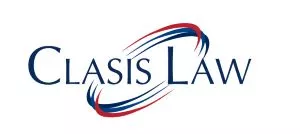The Delhi High Court has recently clarified that if the Court has declared a trademark to be a well – known trademark, then the Registrar is only required to include the said trademark in the "List of Well-Known Trademarks" and cannot enter in to an exercise of re-determination.
The facts leading to the present case1 are that TATA
SIA Airlines ("Petitioner") operates its
full-service Airline under the trademark VISTARA®. The
Petitioner has obtained registrations for the trademark
VISTARA® in multiple classes i.e., 12, 16, 18, 21, 25, 27, 28
and 39 and applications in certain other classes are pending. In
2019, the Petitioner filed a suit2 seeking injunction
restraining the Defendants therein from infringing the registered
trademark VISTARA® and device mark ![]() and passing off etc. before the Delhi High
Court. The Petitioner also sought a declaration of the trademark
VISTARA® as a well-known trademark as defined under the TM Act.
By its order dated August 5, 2019, the suit was decreed in favour
of the Petitioner and the trademark VISTARA® was declared as a
well-known trademark, entitled to the highest degree of protection
across all classes including against disparate products and
services.
and passing off etc. before the Delhi High
Court. The Petitioner also sought a declaration of the trademark
VISTARA® as a well-known trademark as defined under the TM Act.
By its order dated August 5, 2019, the suit was decreed in favour
of the Petitioner and the trademark VISTARA® was declared as a
well-known trademark, entitled to the highest degree of protection
across all classes including against disparate products and
services.
Thereafter, the Petitioner wrote to the Registrar of Trademarks ("Respondent") to consider the decree passed by the High Court and consequently include the trademark VISTARA® in the "List of Well-Known Trademarks" by virtue of the provision of Section 11(8)3 of the Act. The Respondent refused the application and the Petitioner was compelled to file the present writ petition seeking a writ of mandamus directing the Respondent to consider the Petitioner's letter for inclusion of the trademark VISTARA® in the List of Well-Known Trademarks, amongst other reliefs.
ISSUES:
The issues raised for the Court's consideration were:
- Whether once the Court has determined the trademark to be a well -known, can the proprietor of the said trademark be compelled to comply with Rule 1244 of the Trademark Rules, 2017 ("TM Rules")?
- Whether the said Proprietor's request for inclusion of the mark in the List of Well-Known Trademarks can only be entertained when made in the particular form5 along with the prescribed fee6; and/or
- Whether Rule 124 comes in conflict with section 11(8) of the Trademarks Act, 1999 ("TM Act")?
COURT'S OBSERVATIONS:
After hearing the arguments presented by all parties, the High Court proceeded to adjudicate on the issues involved in the present matter. In relation to issue (i) above, the Court opined that the used of the word 'shall' in Section 11(8) of the TM Act leaves not a speck of doubt that once the trademark has been determined to be a well-known mark at least in one relevant section of the public in India by any Court, there is no further scope for determination by the Registrar. Section 11(8) on a plain reading admits of no caveat or exception or any discretion with the Registrar, who is under a clear mandate to include the trademark determined by the Court as a well-known Trademark. In the scheme of hierarchy and in view of the unambiguous language of Section 11(8), the Registrar cannot review or re-determine the status of the trademark declared to be well-known by a Court and is bound to proceed to publish it in the List of Well-Known Trademarks.
The Court also observed that a conjoint reading of Section 11(8) of the Act and Rule 124(1) shows that the scheme of the TM Act provides two different and distinct mechanisms for determination of a trademark as a well-known mark viz. (a) by a Court of Registrar, which is covered by Section 11(8); and (b) by the Registrar on an application in accordance with the procedure prescribed under Rule 124 read with the relevant schedules. This unambiguously connotes that either the Court or the Registrar can determine a trademark to be a well-known mark and it goes without saying that if either one of them has determined the trademark to be a well-known trademark, the other cannot and therefore no proprietor can be relegated to a second round. Therefore, if the Court has declared a trademark to be a well-known trademark, then the Registrar is only required to include the said trademark in the List of well-known Trademarks and cannot enter into an exercise for re-determination.
While examining Rule 124 and considering issue (ii) above, the Court noted that on a plain reading the said Rule does not admit any ambiguity and when holistically read, is not restricted to mere determination of a trademark as a well-know trademark and therefore the heading should not be taken as a guide to understand the import of the Rule. It is true that Rule 124(1) enables any person to make an application for determination of the trademark as well-known and while doing so, mandates the making of the application in Form TM-M and paying the prescribed in the First Schedule. However, Rule 124(2), requires the Registrar to take into account provisions of Section 11(6) to (9), which includes sub-section (8). Therefore, an existing declaration of the trademark as well-known is bound to be taken into consideration. Further sub-Rules (5) and (6) enables the Registrar to publish trademark in the Trade Marks Journal and include the same in the List of Well-Known Trademarks or remove the same, if included erroneously. Provisions of the Rule include the procedure for examining if the mark is already declared as well-known and therefore be included in the List of Well-Known Trademarks. Rule 124(5) does not differentiate between a trademark determined to be well-known by the Court or by the Registrar and in both eventualities the procedures envisaged is the same and consciously the word 'Registrar' is omitted after the words 'in case the trademark is determined as well-known'. In the scheme of the Rule follows sub-Rule (2), where the examination may show that the mark has been determined a well-known by the Court. The purpose of Rule 124 was to streamline the procedure and bring uniformity and going by the language of the Rule, it cannot be restricted in its application to cases where request for 'inclusion' is made with respect to a trademark 'determined' as well-known by the Registrar under Rule 124(1) and exclude inclusion where such a determination is by the Court.
In relation to the fee, the Court held that the Fee of INR 1,00,000/- has been prescribed in the First Schedule for 'inclusion' and not 'determination' of a trademark in the List of Well-Known Trademarks. Therefore, the Court held, no infirmity can be found with the decision of the Respondent in insisting on applying for the inclusion of the trademark VISTARA® in the List of Well-Known Trademarks in the prescribed and requisite form TM-M along with prescribed fee of INR 1,00,000/- under First Schedule to Rule 124.
In response to the issue whether Rule 124 comes in conflict with Section 11(8) (issue no. iii), the Court held that there is no conflict between the said provisions and Rule 124 is an enabling provision for giving effect to Section 11(8) after the trademark has been declared to be well-known by a judicial order. The Legislature while enacting Section 11(8) has proscribed the Registrar from re-determining a trademark already declared as well-known by a Court/Registrar and does not deal with the procedure or mechanism for determination or publication or inclusion of the trademark, which is separately provided for Rule 124 read with the Schedules.
Thus, the Court held that even where a trademark is declared to be a well-known trademark by the Court, Rule 124 will apply with respect to the procedure for publication and inclusion, save and except, calling for documents and inviting objections under sub-Rule (4) and (5) thereof.
The writ petition was accordingly disposed of.
ANALYSIS:
The present judgment is relevant in the sphere of trademarks registration as it brings clarity in the two processes prescribed in the TM Act for declaration of the trademark as a well-known trademark. Additionally, by way of this clarification by the High Court, trademark holders are saved from duplicity and delay in such proceedings encouraging Intellectual Property holders to actively participate in safeguarding their rights.
Footnotes
1. TATA SIA Airlines Limited vs Union of India W.P. (C) – IPD No. 64 of 2021
2. TATA SIA Airlines Limited vs M/s Pilot18 Aviation Book Store & Anr. C.S.(COMM) 156/2019
3. "Where a trade mark has been determined to be well-known in at least one relevant section of the public in India by any Court or Registrar, the Registrar shall consider the trade mark as a well-known for registration under this Act."
4. Rule 124 – Determination of Well-Known Trademark by Registrar
5. Form TM-M
6. INR 1,00,000/-
The content of this article is intended to provide a general guide to the subject matter. Specialist advice should be sought about your specific circumstances.

